ISRAEL: a New Orleans jazz experience? part 6 of the inaugural annual S & D Joined Up Jazz Festival in association with Hot Biscuits
ISRAEL: a New Orleans jazz experience?
part 6 of the inaugural annual S & D Joined Up Jazz Festival in association with Hot Biscuits
By Steve Bewick
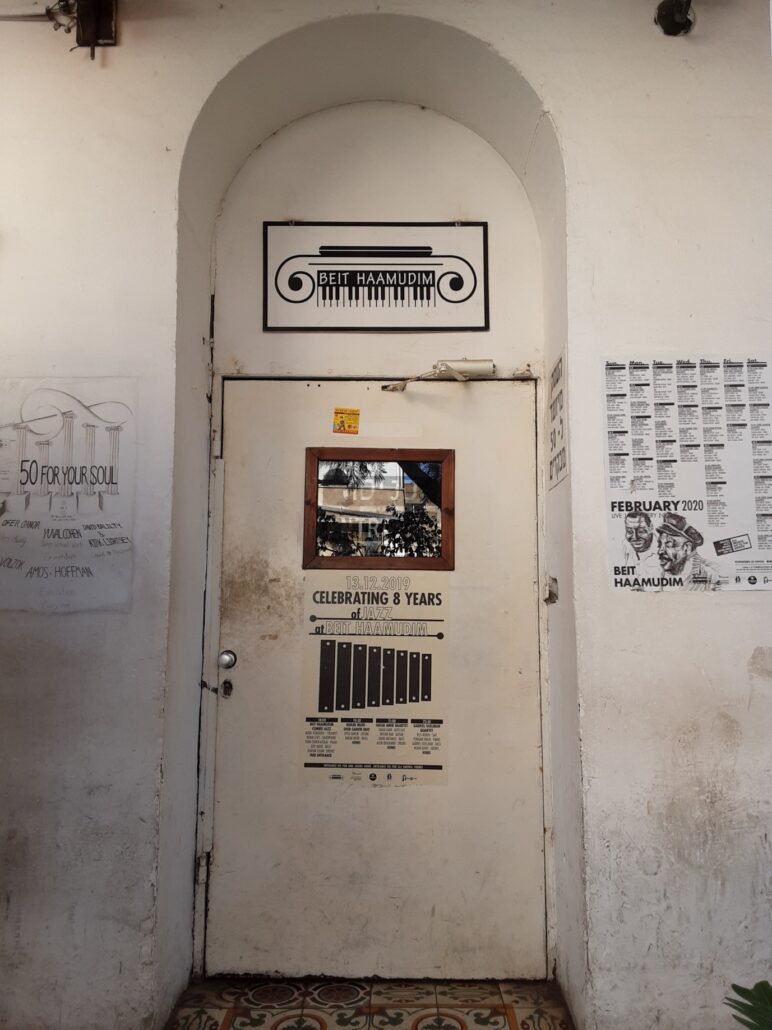
In February of 2019 I was fortunate to accompany friends to Israel. It was my first visit. We were based in Tel Aviv and it did not take long before I was checking out the local scene, football, food and jazz.[i]
On taking advice from friends of my fellow travellers I was pointed in the direction of the House of Pillars, Beit HaAmudim (left) as the best jazz club in town.
After several visits, conversations with jazz patrons, musicians, listening to the music, live, and since on CD and by recommendation to various social media sights three things occurred to me which I hope to explore in this article.
Firstly, jazz has evolved exponentially in Israel over the past three decades or so, secondly Jazz has grown qualitatively and quantitatively across the country and thirdly, the effects of these changes has perhaps been to mirror that of New Orleans at the time of the origins of Jazz.
The beginning of jazz in Israel was in Palestine, actually. The first jazz band was the Police Orchestra during the British Mandate. In the nineteen fifties and early sixties some musicians used to play jazz, but it was all American jazz, the standards. I’m told that, although the first Israeli jazz album was recorded in the early seventies, it was not until the nineties that jazz took off with some significance.
The Red Sea Jazz Festivals each summer in Eilat now brings in relatively large numbers of patrons.
I estimate that in these first two decades of the 21st century Israel has been a jazz laboratory with around 200 musicians currently based in New York, around Europe and the UK doing sterling work on various creative fronts.
How has this come to be? Is this yet another miracle from the Holy Land, or is there some rhyme and reason behind the explosion of improvisational sonic offerings from the country?
I asked Yael Hadany, Manager of the House of Pillars whether there was something fundamentally different about the way Israeli artists approach jazz. Yael responded,
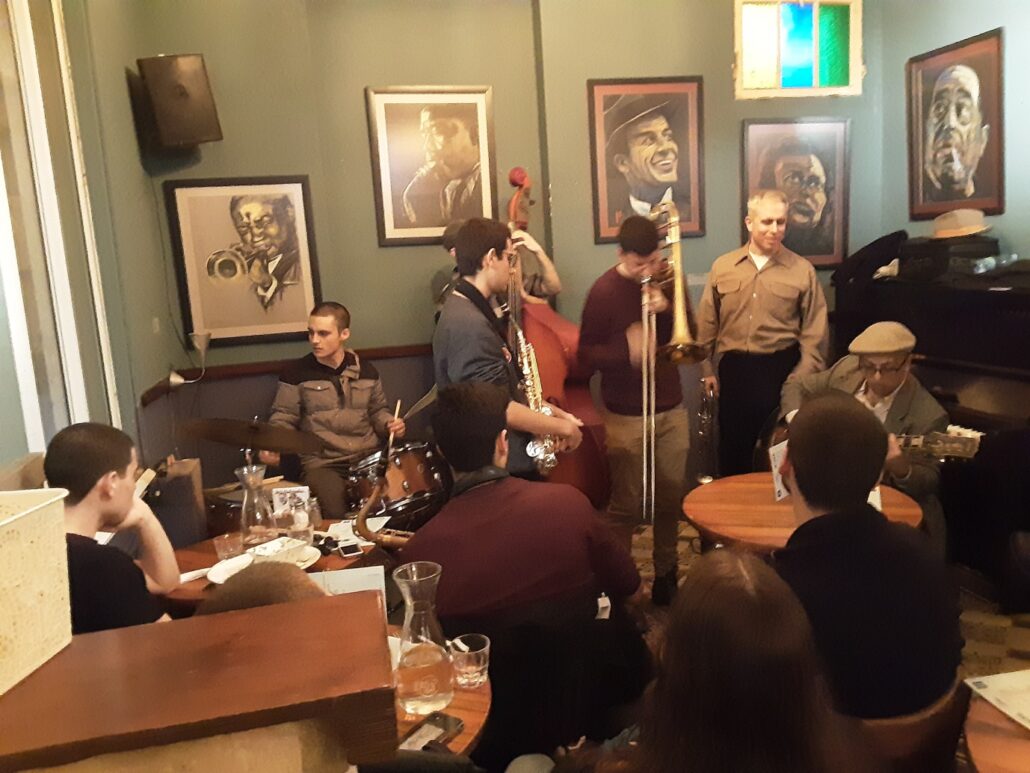
´Jazz is an American art form, American musicians may be more “respectful” of the genre, while their European counterparts, looking in from the outside, have more freedom to play around with it, and invest it with their own cultural baggage. The same might be said for the Israeli jazz ethos.´ (Israeli jazz scene, shown right)
Whilst that different location was New Orleans, itself a veritable cultural melting pot at the time, German jazz writer and producer Joachim Ernst Berendt, in his seminal tome, The Jazz Book, questions whether New Orleans was, in fact, the sole birthplace of jazz, and talks about the entire Delta region as having some impact on the way the art form evolved.
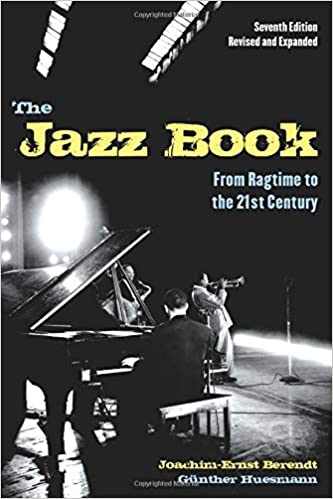
Joachim-Ernst Berendt (1922-2000) was an internationally known authority on jazz and the author of more than 20 books. His Jazz Book was first published in 1952 and has since been translated into many languages.
Even if we do go along with the notion that the creation of jazz can be attributed to that particular southern town, one has to relate to the many communities that populated New Orleans in the early 20th century, including the Spanish, French, English, Italian, German, Creole and “American Negro” groups. Add to that various religious beliefs, taking in Christianity, Judaism and Voodoo, and you have yourself a singular coalescence of sounds, smells, flavours and sensibilities.
That sounds a lot like Israel too. But as I was told by local jazz musicians you have to pay your dues. You have to work through the underlying established strata before you ´find your own voice.´ It took Israeli jazz a while to do that.

I was told that it was the efforts of the likes of American born saxophonist Mel Keller, who made Aliyah in the middle of the twentieth century, who is credited with kick starting the Israeli jazz scene. Things gradually evolved through the founder generation of Israeli jazz players. These include the now 80 year old pianist Danny Gottfried, who studied piano at the Tel Aviv Academy of Music. In 1959 he won First Prize in the Mozart Piano competition. In 1962 he earned an undergraduate degree in economics at Hebrew University of Jerusalem and went on to study law. He began his career as a classical pianist in the early 1960s. In the 1970s he was one of the founders of the Israeli Jazz Workshop quartet, the group that recorded the first instrumental jazz album in Israel and fused jazz with Jewish and Arab motifs. In 1981 he founded the Jazz Faculty in the Jerusalem Academy of Music and Dance and served as head of the faculty for eight years. In 1985 he founded the Jazz Studies department of the Thelma Yellin Art High School. In 1992 he was commissioned by the Tel Aviv Museum of Art to direct the Jazz Concerts Series at the museum. In 1994 he started the Jazz Series Lectures at the Open University of Israel, a yearly series of ten lectures on the History of Jazz. In 1998 he created the “Jazz at The Opera” concert series at the Tel Aviv Opera House, which he ran until 2004. In 1987 he initiated the Red Sea Jazz Festival in Eilat which he directed artistically for 22 years.
Gottfried leads his own Jazz Trio and Quintet, which has been invited by the Israeli Ministry of Foreign Affairs to present Israeli jazz in tours abroad: 1993 Belarus, 1996 Latvia, 1998 India, 2004 Italy. He has performed with many jazz greats, including Dizzy Gillespie, Benny Golson, Frank Foster, Sam Rivers, Niels-Henning Ørsted Pedersen, Randy Brecker, Von Freeman, Johnny Frigo, Franz Jackson, Clark Terry, Major Holley, Jaroslav Jakubovič, Ronnie Cuber, Sheila Jordan, Georgie Fame, Mark Murphy, Kevin Mahogany, Jean Loup L’ongnon and Gyula Babos.
Gottfried serves currently as president of the Israeli Musicians’ Union and general manager of the Israeli Musicians’ Collecting Society.
Gottfried’s son, Yaron Gottfried, is a noted conductor, composer, and pianist, thus protecting the legacy and extending the traditions of Israeli Jazz.
Others doing similar work include 77 year old drummer Areleh Kaminski, and 81 year old multi-instrumentalist Albert Piamenta, who played alto and soprano saxophone on a six track run out that fused Jewish, Arabic and Mediterranean grooves with jazz.
That, I was told, was a rarity back then. The still diminutive Israeli jazz community generally tended to follow the American jazz route, performing bebop, swing and even some Dixieland and ragtime. Israeli jazz began to find its ´own voice” around ´twenty five years ago, when bassist Avishai Cohen who, along with fellow bassist Omer Avital and trombonist Avi Lebovich was part of the vanguard triad that relocated to New York to seek more expansive jazz pastures.
Cohen’s first three albums Colours, Devotion and Adama sought to marry the jazz discipline he had trained in with the melodies he had naturally imbibed as a youngster, taking in material written by the likes of iconic song-smiths Mordehai Zeira and Sasha Argov and Arabic melodies.
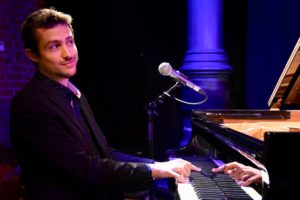
Increasingly, for the last decade and a half or so, jazz artists from Israel have culled items from the Great Israeli Songbook, feeding off Israeli folk and pop as well as from more traditional and even liturgical songs. The recent release from pianist Guy Mintus, (left) Connecting The Dots, for example, includes a plaintive ethereal rendition of the Avinu Malkeinu prayer, including a reading of Mizrahi staple Haperach Begani, with Mintus drawing on his Moroccan roots to produce a highly convincing turn on vocals.
Then there’s long time Paris-based Israeli pianist Yaron Herman’s various versions of such venerated Israeli nuggets as Layla Layla and Ein Gedi, and even a stirring take on Hatikva.
Here in the UK we have two prominent jazz musicians from that country, Asaf Sikis and Gilad Altzmon.

Asaf (right) spent his teens and early twenties in Rehovot, Israel where he began drum lessons aged 12. His early musical influences were The Beatles, The Police, Yes, Allan Holdsworth, Weather Report, and genres that informed him included classical music, Arabic, Balkan, Klezmer, Pop, and Israeli folk music. In 1990, shortly after he completed his three year national service he started his full time professional career working as an all round drummer in Israel. He has played with some of Israel’s jazz and world music luminaries such as Harold Rubin, Albert Beger, Yair Dalal, Eyal Sela and many more.
Asaf moved to Tel Aviv and soon afterwards he formed the Asaf Sirkis Trio featuring Kobi Arad on keyboards, and Gabriel Mayer on electric bass. With that line up he recorded his first solo album One Step Closer (1996) as well as touring in Israel with the trio.
Asaf left Israel in 1998, settling in London in 1999. Shortly after arriving in London he met Gilad Atzmon with whom he formed The Orient House Ensemble (OHE) and recorded seven albums, including Exile, which won the Best CD Of The Year award at the BBC Jazz Award 2003 while the band was nominated for Best Band in 2004. After almost a decade in the OHE, Asaf left the band in 2009 to focus on his solo career and other collaborations.
Since 2014, Asaf has co-led the Asaf and Bialas International Quartet together with Polish singer/composer Sylwia Bialas. The Quartet’s new double album Our New Earth was released in 2019.

Gilad Altzmon, (shown playing at the 606 club in London, which I have previously covered on these pages) who also resides in the UK, actually first became interested in the British variety of jazz, when he came across some recordings of it in a British record shop in Jerusalem in the seventies, and he found inspiration in the work of Ronnie Scott and Tubby Hayes and came to regard London as ´the Mecca Óf Jazz.´ As a seventeen year old, he happened to hear a radio broadcast of a recording of Charlie Parker’s With Strings and was swept off his feet.
Gilad is on record as having stated of the album that he, ´loved the way the music is both beautiful and subversive, the way he basks in the strings but also fights against them.´
Gilad was conscripted into the Israel Defence Forces in June 1981, first serving as a combat medic, and after participating in the 1982 Lebanon War. Gilad, was transferred to a position within the Israel Defence Forces Orchestra and spent most of his military service in the Israeli Air Force Orchestra. In the following years, he trained at the Rubin Academy of Music in Jerusalem, and throughout the late eighties and into the nineties, Gilad was a popular sessional musician and producer, recording extensively and performing with Israeli artists including, Yehuda Poliker, Yardena Arazi, Si Himan, Meir Banai and Ofra Haza.
It hasn’t all been a one way street for jazz musicians. Some of the greats from the larger jazz world have also taken on board some of the sounds and sentiments from Israel. One of the most striking examples of outgoing influence is The King David Suite written by Lionel Hampton. The legendary American drummer and vibraphonist, who became interested in Judaism after World War Two, met the then Israeli Prime Minister David Ben Gurion and Chief Rabbi Yitzhak HaLevi Herzog and subsequently came to perform the work in a mammoth stint of almost 50 concerts.
One should also pay tribute to Arnie Lawrence. The late American jazz saxophonist and educator made Aliyah in the late nineties and literally transformed the Israeli jazz scenes and inspired generations of the country´s jazz artists including Itamar Borochov, who was Lawrence’s last student and pianist Omri Mor, who today combines jazz with Andalusian music. Those who have followed the same sidetracks & detours as Arnie Lawrence also include Paris-based saxophonist Shauli Einav and bassist Hagai Belizki, who now channels a highly creative path through Arabic musical pastures.
I´m confident that this brief report reflects how jazz in Israel, and Tel Aviv in particular, has grown exponentially.
I also hope that what I have reported will convince readers of how the number of musicians has grown significantly and that although their impact has been relatively quiet, but significant upon the world wide jazz scene. How many other national jazz scenes are there with a distinctive social and musicological history? For example jazz in Germany, Italy and Spain with the rise and fall of Fascism, Vietnam and the impact of the `American war` there. This is something I would like to explore in a further article, corona virus permitting.
Special thanks to Yael Hadany, Manager, Beit HaAmudim Jazz Club, Neta Silbiger, Pannonica Jazz and Singer, Ofar Landsberg, Guitarist, Danny Rosenfeld, Trumpeter, Gasper Bertoncelj, percussionist, many jazz patrons of the Jazz Club and there helpful staff and the many pages of the World Wide Web.
This article was written by Steve Bewick, Jazz Broadcaster, Hot Biscuits for Sidetracks & Detours. [1] For an audio and visual insight into my experience and expectations whilst flying into Tel Aviv airport go to
Whilst the full version of Steve´s poem based on his stay can be found at https://www.writeoutloud.net/public/blogentry.php?blogentryid=106208
The background story to the poem and the supporting musicians to the video can be found at

Don´t forget you can hear Gary and Steve Bewick presenting Hot Biscuits on www.fc-radio.co.uk
We will continue with day seven of our Joined Up Jazz Festival with tomorrow´s post, Ella Fitzgerald; First Lady of Song by Sidetracks and Detours Editor, Norman Warwick.
Meanwhile we are also grateful to Lanzarote Information, Jazz In Reading, Jazz North and Ribble Jazz And Blues for their kind support by including details of our festival in their listings, We look forward to bringing you further details in the weeks to come of the excellent work they do for the jazz community.

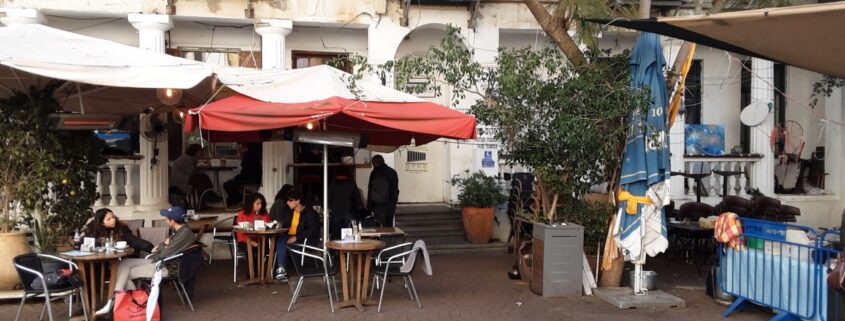


Leave a Reply
Want to join the discussion?Feel free to contribute!